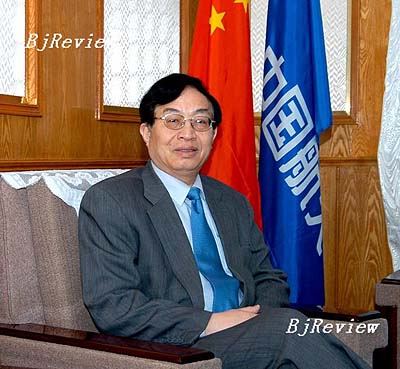|

When China's first lunar orbiter, Chang'e-1, successfully blasted off from Xichang Satellite Launch Center in southwestern Sichuan Province on October 24, Ye Peijian, Chief Designer and Commander in Chief of the circumlunar satellite, was a happy man.
But that was just a start. As the most sophisticated satellite Chinese scientists have ever handled, Chang'e-1 will undergo at least 10 orbital adjustments before it finally begins to orbit the moon on November 5.
"The half-century exploration is not long when compared with human history and the pursuit of the unknown in outer space," Ye said. "We felt very honored and proud to send the country's first moon orbiter on behalf of all the Chinese people."
The satellite, named after a mythical fairy who flew to the moon, will send back the first image of the lunar surface in late November and continue its scientific explorations of the moon's surface for a whole year, including acquiring 3-D images and analyzing the lunar landscape. Yet this is only the initial steps of China's three-stage exploration plan.
Ambitious and capable, the 62-year-old Ye has helped realize the dream of generations of Chinese, to explore outer space. Ye graduated from the Radio Department of Zhejiang University in 1968. In the early 1980s, he spent five hard years in Switzerland studying for his doctorate.
Ye began his career as a chief engineer on a study of control system robot vision and computer applications. He presided over the development program of CAD/CAM networks, and the establishment of a satellite VAST network for the Shenzhen Stock Exchange won him a state-level award. Later Ye turned his attention to satellite research and production at the Chinese Academy of Space Technology. He was elected an academician with the Chinese Academy of Sciences in 2003, and joined the lunar probe program in 2004.
"The lunar project represents the development of China's self-innovation capacity in terms of exploration of outer space, which is also a contribution to the world," said Ye. In his eyes, it's just one small step for China. | 